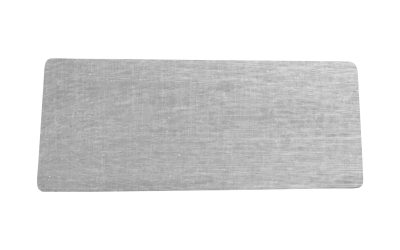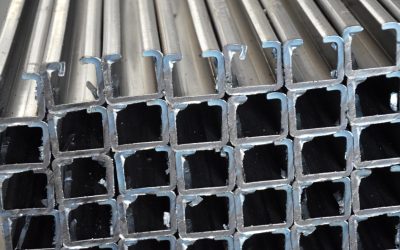- Ana Sayfa
- Metal Punching
Metal Punching
Metal Punching
Metal punching is one of the most critical and widely used fabrication processes in modern manufacturing. It enables manufacturers to create precise holes, slots, and shapes in sheet metal and metal plates, supporting applications across industries such as automotive, aerospace, construction, electronics, and heavy equipment.
In this comprehensive guide, we explore the fundamentals of precision punching, its methods, equipment, materials, advantages, challenges, and industry trends. Whether you’re an engineer, procurement specialist, or manufacturer, this article will provide in-depth insights into how metal punching can optimize your production operations and improve your product quality.
Precision punching refers to the process of cutting or shearing a hole or shape in a metal sheet by applying high mechanical force through a punch press or punching machine. The punch — a hardened tool — presses through the sheet and pushes the cut-out piece, known as the “slug,” through a die underneath.
This process is essential for creating holes for fasteners, ventilation, wiring, or aesthetic patterns, and it is widely used in the mass production of components where speed, accuracy, and cost-effectiveness are critical.
How Does Metal Punching Work?
- The basic setup of a metal punching operation includes:
- A punch press or punching machine
- A punch — the cutting tool
- A die — the counterpart support tool
- The workpiece — typically sheet metal or metal plate
The punch is driven down at high speed into the die, shearing the metal and removing the slug. Depending on the material thickness, the machine may require mechanical, hydraulic, or CNC (computer numerical control) drive systems.
Types of Metal Punching Machines
Several types of punching machines exist, depending on the application and scale:
Mechanical Punch Press
These machines use a flywheel and mechanical drive to deliver fast, repeatable punches, ideal for high-volume production.
Hydraulic Punch Press
Powered by hydraulic pressure, these machines offer greater control over punching force and are better suited for thicker materials or large holes.
CNC Turret Punch Press
These advanced machines use CNC programming to control punch movement and die selection, allowing for complex patterns and automated, flexible production with minimal operator intervention.
Materials Used in Metal Punching
Metal punching works across a wide range of materials, including:
Carbon steel
Stainless steel
Aluminum
Copper
Brass
Titanium
The material’s thickness, hardness, and ductility influence the required punching force and the choice of punch and die materials, which are often made of tool steel or carbide for durability.
Advantages of Metal Punching
Punching process offers numerous advantages compared to other cutting methods:
- Speed and Efficiency: Suitable for high-speed, high-volume production.
- Cost-Effectiveness: Lower per-part cost, especially for repetitive jobs.
- Precision and Accuracy: Consistent hole sizes and shapes with tight tolerances.
- Versatility: Capable of producing complex patterns, slots, louvers, and forms.
- Minimal Waste: Efficient use of material, with low scrap rates.
Compared to laser cutting or waterjet cutting, punching is typically faster and less expensive for standardized holes or shapes, although it’s less suitable for very intricate or delicate cuts.
Applications of Metal Punching
Precision punching plays a vital role in a wide range of industries:
Automotive
Producing components such as brackets, panels, gaskets, and reinforcements.
Aerospace
Creating lightweight structural parts with precision holes and cut-outs.
Construction
Fabricating metal panels, decorative facades, and ventilation grilles.
Electronics
Manufacturing enclosures, heat sinks, and precision electronic components.
Heavy Equipment
Producing strong, durable parts for agricultural, mining, and industrial machinery.
Challenges in Metal Punching
While highly effective, precision punching does come with certain challenges:
- Tool Wear: Frequent use leads to punch and die wear, requiring regular maintenance.
- Burr Formation: Edges may need secondary finishing to remove burrs.
- Material Limitations: Very hard or thick materials can exceed punching machine capacity.
- Setup Time: For small production runs, setup time may reduce efficiency.
- Modern precision punching machines and advanced tooling help mitigate many of these issues, improving output quality and reducing downtime.
Metal Punching vs. Laser Cutting
Manufacturers often compare metal punching with laser cutting when selecting a fabrication method. Here’s a quick comparison:
| Feature | Metal Punching | Laser Cutting |
|---|---|---|
| Speed | Faster for repetitive holes and shapes | Slower, but highly precise for complex cuts |
| Cost per Part | Lower for high-volume production | Higher for low-volume or intricate designs |
| Thickness Range | Limited by punch/die capacity | Can handle thicker or harder materials |
| Edge Quality | May require deburring | Cleaner, high-quality edges |
| Flexibility | Best for standardized patterns | Best for custom or detailed shapes |
Choosing the right method depends on production volume, material, budget, and design complexity.
Industry Trends and Innovations
The precision punching industry is evolving rapidly, driven by innovations in:
- CNC Automation: Reducing setup times, increasing flexibility, and minimizing human error.
- Sustainable Manufacturing: Optimizing material use and energy efficiency.
- Advanced Tooling: Longer-lasting punches and dies, precision coatings, and modular tools.
- Integration with ERP/MRP Systems: Real-time production monitoring and digital workflow integration.
These advancements enable manufacturers to remain competitive in demanding global markets.
Choosing the Right Metal Punching Supplier
When sourcing metal punching services, consider the following:
- Capabilities: Can the supplier handle your material type, thickness, and design complexity?
- Equipment: Do they use modern CNC turret punch presses or hydraulic machines?
- Certifications: Look for ISO 9001 or industry-specific standards to ensure quality.
- Lead Time: Can they meet your delivery deadlines, especially for urgent projects?
- Pricing: Are they offering competitive rates for high-volume or custom jobs?
Working with an experienced metal punching supplier ensures precise results, faster turnaround, and long-term cost savings.
Final Thoughts
Metal punching is a cornerstone of precision manufacturing, offering a fast, efficient, and cost-effective solution for cutting holes and shapes in metal. From automotive parts to architectural panels, this technology continues to support innovation and quality in countless industries.
By partnering with a reliable supplier and leveraging the latest equipment and tooling, manufacturers can achieve superior results that meet the most demanding specifications. As the market evolves, staying informed about advancements in metal punching will help businesses stay ahead in the global competition.
At HL Metal Demir Çelik Sanayi, we specialize in delivering high-accuracy punching solutions designed for today’s demanding industrial and commercial sectors. Our metal fabrication punching services combine advanced machinery, skilled technicians, and rigorous quality control to ensure every part and component we produce meets precise specifications.
Metal punching is a critical process in sheet metal fabrication, allowing manufacturers to create holes, slots, and patterns in various metal materials with precision and speed. Whether working with stainless steel, aluminum, carbon steel, or alloy metals, HL Metal uses cutting-edge CNC punching equipment to deliver superior results for both small-batch custom projects and large-scale production runs.
One of the key advantages of our high-accuracy punching solutions is the ability to achieve consistent, repeatable outcomes across complex designs. We work closely with clients from industries such as construction, automotive, aerospace, energy, and machinery manufacturing, providing them with punched components that meet strict dimensional and quality standards.
Our metal fabrication punching capabilities cover a wide range of applications, including:
Perforated metal sheets for ventilation and filtration
Decorative punched panels for architectural use
Custom brackets, enclosures, and frames for equipment
Precision cutouts for electronic housings and control panels
Punching patterns for anti-slip surfaces or specialized industrial needs
At HL Metal, we understand that time is critical. That’s why we invest in efficient workflows and automated punching systems that reduce lead times without compromising quality. Our team ensures that every punched part is carefully inspected for accuracy, edge quality, and consistency, delivering a product ready for immediate use or further fabrication.
By choosing HL Metal’s metal fabrication punching services, customers benefit from:
Precision punching for complex shapes and designs
Compatibility with various metals and thicknesses
Cost-effective solutions for small and large production runs
Customization options based on project specifications
Fast turnaround times and reliable delivery
In addition, we are committed to sustainability by minimizing material waste and optimizing energy use throughout the punching process.
If you are looking for a trusted partner to provide high-accuracy punching solutions and reliable metal fabrication punching services, HL Metal Demir Çelik Sanayi is here to help. Contact our team today to discuss your project requirements and discover how our expertise can support your production goals with quality, efficiency, and precision.




